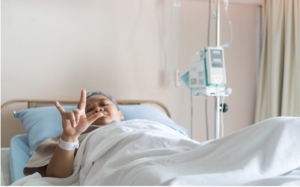Support Expressive Communication about COVID-19
 Adapted from an article by Kelsey Mandak, April 8, 2020
Adapted from an article by Kelsey Mandak, April 8, 2020
Read Kelsey Mandak’s full article on the RERC website
If you are someone who uses augmentative and alternative communication or someone who cares for someone who cannot rely on speech to communicate with others, here are some pointers and resources:
- Establish clear yes/ no signals.
- Yes /no signals might include a head nod or shake, thumbs up or down, looking up or looking down. These signals should be easy to produce and easy to recognize. Make sure you can use these signals when lying down.
- Prepare personalized low-tech nonelectronic communication supports. Depending on your needs and skills, these might include
- Alphabet board with high importance messages
- Word board to express medical needs and wants and ask questions
- Communication board of pictures or photos to express medical needs and wants
- Dry erase board
- Prepare instructions for medical staff or other new communication partners. Explain communication techniques (e.g., asking appropriate questions, waiting, confirming understanding). The instructions should also include information on positioning and daily care requirements. Keep the instructions as short as possible. Use simple clear language. Provide photos to illustrate or include videos demonstrating techniques.
- Check out communication boards and select a few that might meet your needs. Have someone write instructions on the back about how you can use these board. Laminate them if possible. Find a way to attach the board to a bed and allows a healthcare provider to lift it up when you ant to use it.